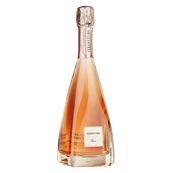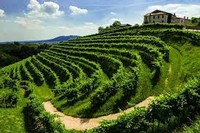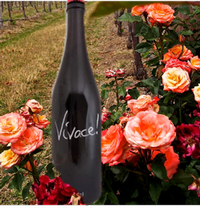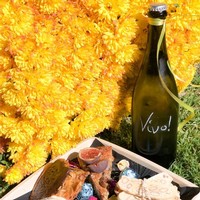The Sparkling Barbera of di Lusso
Origins
Italy produces more different kinds of sparkling wine than any other country in the world. In fact, they have been crafting spumantes since Etruscan times – prior to the Romans times, and long before Dom Perignon and his French brethren discovered it by mistake. The range of styles of Italian sparkling wines is enormous - from the light, off-dry Proseccos of the Veneto to the classic Franciacorta (the best of which I think rank alongside the wines of Champagne itself) – as is the number of different grape varieties used in its production.

Franciacorta, of course, translates as ‘Short France’, and ever since Napoleon’s time has been using the methodé champenoise to make their sparkling wines, and still use French terminology to describe it (brut, rose, etc), and French varietals pinot noir and chardonnay as their varietals. This style has its own bottle shape. This is one favoured by Fanciacorta producers (and some of the more upmarket Proseccos).
But nobody seems to be able to tell me what it’s called!
The Charmat method
With the exception of the Franciacortas, most Italian sparkling wines – especially Prosecco - are made using the Charmat method. In this method, the wine’s second fermentation occurs in a pressurised stainless-steel tank instead of in the bottle, and the resulting wine is bottled young. There is none of the complexity and time - consuming process of ’real’ champagne. No riddling, no disgorging, no inconsistency in the final product, etc.
These are wines made in a hurry, to feed a market that is thirsty and cost-conscious. The best known of Italian sparkling reds is made from the Lambrusco grape, in an impressive range of styles.

If you like it a bit sweet, pick one that says ‘Semisecco’, ‘Amabile’ or ‘Dolce’ on the label. If you like it dry, look for the words ‘Secco’ on the label (with this style the flavours are more rhubarb or strawberry). Lambrusco di Sorbara and Lambrusco Rosato (rosé) are the two lightest styles, showing strawberry, and very little or no tannin).
A typical prosecco vineyard, near the town of Conegliano in the Veneto. Rugged hills that have been tamed by hand-crafted vineyards.
di Lusso Estate Sparkling Wines
As of 2019, di Lusso Estate has joined the Italian Sparkling Club.

Our di Lusso Estate Vivacé, made from our own Barbera, grown on the estate has, in its short time on our tastings, become quite popular. We are expecting this wine to be a feature of the upcoming spring and summer, matched with charcuterie or cold duck, and served quite cold.
Our Vivacé is a spumante – sparkling wine – rather than a frizzante (semi-sparkling), The only example I could find in Italy of a bubbly Barbera is the Barbera Frizzante. The only one that I have tasted that I’ve tasted is more raspberry and fennel in flavour, and lighter in bubble as its name implies. (I must say, I prefer ours!).
We send our Barbera to Petersons in the Hunter to apply the ‘sparkle’. This they do using the Charmat method. The process isn’t cheap, but I’m yet to be disappointed in the end-product.

Both the Vivo (made using Vermentino or Arneis) and the Vivacé are both true to their Italian origins and to the summer life of Australia.
Salute!